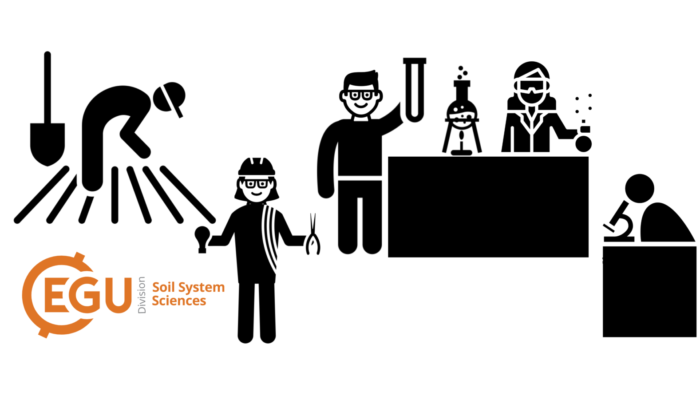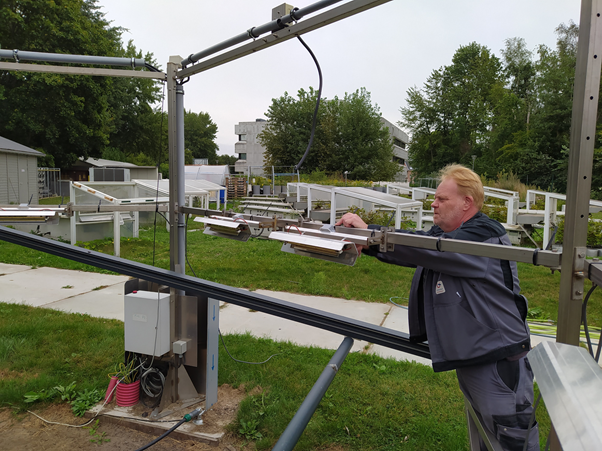
Another month has arrived, and we continue our monthly series of blog posts dedicated to highlighting the indispensable work carried out by our technicians, laboratory assistants, and research support teams. Researchers in Soil Science rely on these key individuals and their tireless efforts to maintain our laboratories, carry out fieldwork, and make research happen!
So far in this monthly series, we have visited technicians in Papua New Guinea, Prague, Israel, and Italy. This month, we head to Belgium to enjoy a fireside chat with Marc Wellens who is based at the University of Antwerp.
Don’t forget that each month, we’ll spotlight a technician in soil science, and find out a little of their roles and responsibilities behind the scenes. So, if you’re a technician, or if you’d like to nominate a technician for this feature, please email Daniel.L.Evans@cranfield.ac.uk
Technician of the Month #5
Marc Wellens – University of Antwerp, Belgium
So, Marc – it’s great to have you with us (albeit virtually) here at EGU SSS. We’re looking forward to hearing about your experiences as a research technician. If you could start with telling us where you are based, and what your main responsibilities are.
I have worked in the Plants and Ecosystems (PLECO) research group at University of Antwerp since 2010. I am involved in different types of work related to the setting up of field experiments, mostly involving their electronics, but also the mechanical infrastructure. Lately, for example, I have been involved in setting up the AnaEE FATI experimental platform for growing plants in outdoor mesocosms with fully automated control of irrigation and air temperature.

One of the technicians at PLECO, Marc Wellens, is installing infrared lamps at the FATI platform. Marc has made these lamps all by himself! Photo credit: Olga Vindušková
What made you want to be a research technician?
It was more of a coincidence. For 18 years, I worked for a private company that was reorganized, and so it was only when I had to look for a new job that I thought of applying to work as a research technician.
What would you say is the most exciting aspect about being a research technician in soil science?
It is definitely the fact that, when I help to set up an experiment from which a student or a researcher can obtain meaningful results, I’ve also contributed to science. That is satisfying!
What would you say is the most challenging aspect of being a research technician?
For me it’s the fact that researchers, especially PhD students, rely on my work – that the setup works properly without major flaws. If things go wrong, this can even mean losing a year of data, and that is of course a big risk for students whose timeline is tight. For postdocs I think the pressure is somewhat lower because there are ways to extend their contract if needed but still, that feeling is pretty heavy; it’s a lot of stress. Also, the field conditions are challenging; everything is always more complicated than in the lab (e.g. weather changes represent a major challenge).

This setup will allow experiments to run at up to 7°C above ambient temperature combined with the already-running irrigation control. Photo credit: Olga Vindušková
What is the one thing you wish soil scientists would do (or do more) when they work with technicians?
Timely planning and communication are important. Researchers should try to tell us in time what they will need from us. I understand it’s difficult to think ahead when everyone is juggling their day-to-day tasks, but to create an experimental setup takes time. First, I need to design it, then discuss the design with the researchers, then order all the needed materials – which may take several months to arrive – and only then can I start physically working on making it. Sometimes people expect solutions from one month to another, but that’s often not possible. Big experiments require planning, even one year ahead.
Edited by Dan Evans, Layla M. San-Emeterio and Olga Vindušková
References
[1] Featured image created by Olga Vindušková using icons created by Louis Prado, Adrien Coquet, ProSymbols, and iconixar, from Noun Project
